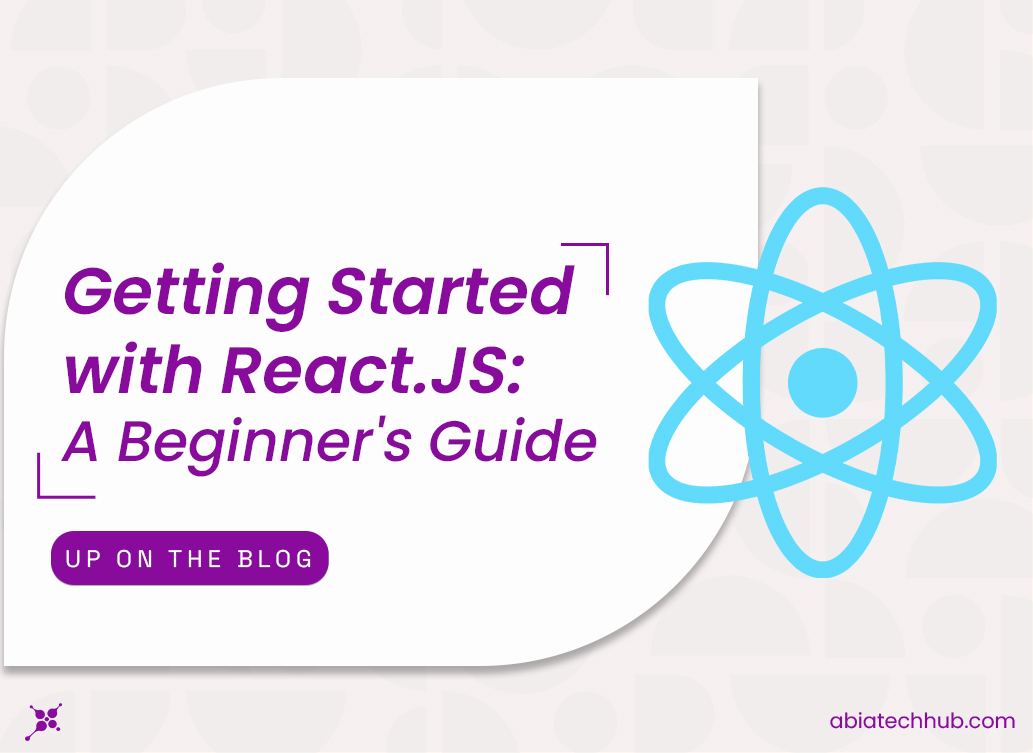React.js is a powerful JavaScript library used for building user interfaces, and it has become one of the most popular choices for front-end development. This guide is aimed at beginners who want to learn the fundamentals of React.js, understand its core concepts, and set up a development environment.
What is React.js?
React.js, often called React, is an open-source JavaScript library developed by Facebook and Instagram. It's designed to simplify the process of building interactive and responsive user interfaces for web applications. React has gained widespread adoption due to its component-based architecture and efficient rendering mechanism.
Why React?
Before we dive into React, let's briefly explore why it's a popular choice for web development:
-
Component-Based: React encourages a modular approach to building web applications. You break down the user interface into reusable components, making managing and maintaining your code easier.
-
Virtual DOM: React uses a virtual representation of the DOM (Document Object Model) to optimize rendering. This results in better performance, as React minimizes the number of actual DOM updates.
Now that we've set the stage, let's explore the core concepts of React and get you started on your React journey.
Core Concepts
Components
At the heart of React lies the concept of components. Components are the building blocks of a React application. They encapsulate the UI's logic and appearance into reusable, self-contained units. There are two main types of components in React:
-
Functional Components: These are defined as JavaScript functions and are primarily responsible for rendering UI elements.
-
Class Components: These are defined as ES6 classes and can manage state and lifecycle methods.
Props and State
In React, data flows from parent components to child components through two essential concepts: props and state.
-
Props (Properties): Props are used to pass data from a parent component to a child component. They are read-only and help make components reusable by allowing them to receive different data.
-
State: State is a way to manage data that can change over time within a component. It is mutable, and when state changes, React re-renders the component.
Rendering
React efficiently updates the user interface by re-rendering components when their data changes. However, it doesn't update the actual DOM for every change. Instead, React uses a virtual representation of the DOM called the Virtual DOM. This allows React to minimize DOM manipulations and enhance performance.
Lifecycle Methods (for Class Components)
For class components, React provides lifecycle methods that allow you to perform actions at specific points during a component's life cycle. For example:
-
componentDidMount: Executes after a component has been inserted into the DOM.
-
componentDidUpdate: Executes after a component's update has been flushed to the DOM.
These lifecycle methods enable you to manage side effects and interactions with the DOM.
Setting Up Your Development Environment
Prerequisites
Before you begin, make sure you have the following:
-
Basic knowledge of HTML, CSS, and JavaScript.
-
A code editor (e.g., Visual Studio Code) installed on your computer.
Node.js and npm
React development relies on Node.js and npm (Node Package Manager). To check if you have them installed, open your terminal or command prompt and run the following commands:
node -v
npm -v
If Node.js and npm are not installed, you can download and install them from the official Node.js website (https://nodejs.org/).
Creating a React App
The easiest way to get started with React is by using the "Create React App" tool, which sets up a new React project with a basic structure. To create a new React app, open your terminal and run the following command:
npx create-react-app my-react-app
NOTE: Replace "my-react-app" with your desired project name. This command will create a new directory with your project files.
Project Structure
Once your React app is created, you'll find a project structure that looks like this:
-
node_modules: This directory contains all the packages and dependencies your project needs.
-
public: The public directory contains the HTML template and assets (like images or icons) for your application.
-
src: The src directory is where you'll spend most of your time writing React components and application logic.
Running Your First React App
To start your development server and view your React app in the browser, navigate to your project directory using the terminal:
cd my-react-app
npm start
This command will start a local development server, and your React app should automatically open in your default web browser.
Your First React Component
Now that your development environment is set up, let's create your first React component.
Creating a Component
In the src directory of your project, you'll find a file named App.js. Open it and you'll see a functional component definition:
This is a functional component called ‘App’. You can start by adding your own content inside the ‘<div>’ element.
Rendering a Component
To render your App component, open the src/index.js file. You'll see a line of code that looks like this:
This code instructs React to render your ‘App’ component inside the HTML element with the ID "root." You can replace the content inside the ‘App’ component with your own JSX (JavaScript XML) code to build your application's user interface.
Passing Props
To pass data to a component, you can use props. For example, if you wanted to pass a title to your ‘App’ component, you could modify it like this:
Then, when rendering the ‘App’ component, you can pass a title prop like this:
The title prop will be accessible within the ‘App’ component as ‘props.title’.
Conclusion
Congratulations! You've taken your first steps into the exciting world of React.js. In this beginner's guide, you've learned what React is, explored its core concepts, and set up a development environment to start building your own React applications.
To continue your learning journey, consider exploring the official React documentation (https://reactjs.org/) and various tutorials and resources available online. React has a vibrant community, and there are countless opportunities to build dynamic and interactive web applications with this powerful library.



